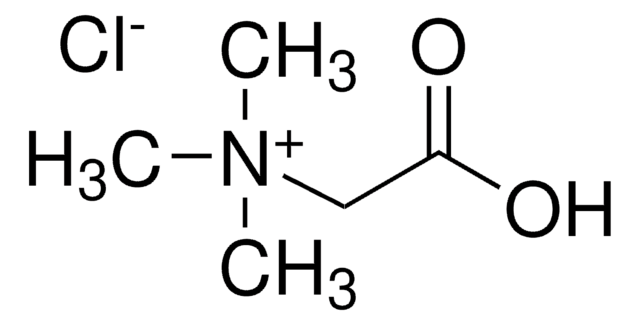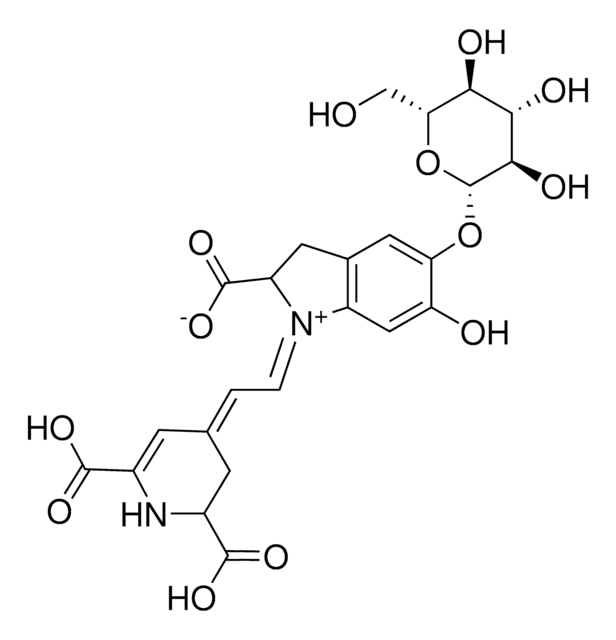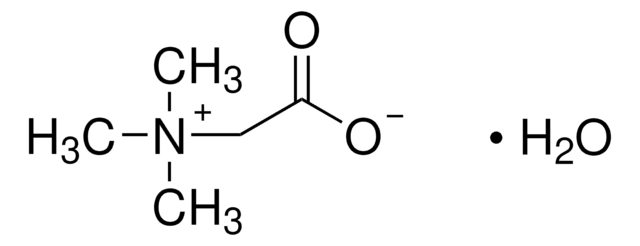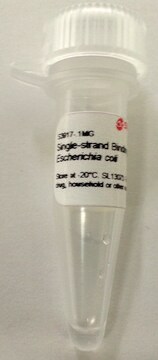B0300
Betaine solution
5 M, PCR Reagent
Synonym(s):
TMG, trimethylglycine
About This Item
Recommended Products
Quality Level
form
liquid
packaging
vial of 1.5 mL
concentration
5 M
technique(s)
PCR: suitable
color
colorless
application(s)
agriculture
foreign activity
DNase, RNase, none detected
storage temp.
2-8°C
SMILES string
C[N+](C)(C)CC([O-])=O
Looking for similar products? Visit Product Comparison Guide
General description
application
- loop-mediated isothermal amplification (LAMP) reactions[4]
- polymerase chain reaction for genomic DNA amplification[5]
- quantitative polymerase chain reaction (qPCR) for telomere length analysis[6]
- in the PCR amplification of CGG repeats in the genomic DNA[7]
- reverse-transcription loop-mediated isothermal amplification (RT-LAMP) to detect severe acute respiratory syndrome coronavirus 2 (SARS-CoV-2)[8]
- PCR amplification of DNA-directed RNA polymerase II largest subunit (RPB2)[9]
- reverse transcription during library preparation using Smartseq2[10]
Packaging
Storage Class
12 - Non Combustible Liquids
wgk_germany
WGK 1
flash_point_f
Not applicable
flash_point_c
Not applicable
Choose from one of the most recent versions:
Certificates of Analysis (COA)
Don't see the Right Version?
If you require a particular version, you can look up a specific certificate by the Lot or Batch number.
Already Own This Product?
Find documentation for the products that you have recently purchased in the Document Library.
Customers Also Viewed
Articles
SeqPlex™-I WTA kit amplifies RNA for NGS, enabling genomic studies from limited samples.
Protocols
Protocol for high fidelity amplification of long PCR fragments up to 22kb from complex DNA mixtures and up to 40kb from simple DNA mixtures. AccuTaq LA.
REDAccuTaq LA protocol offers high-fidelity amplification of long PCR fragments with direct gel loading capability.
Related Content
KOD One™ PCR Master Mix overview for ultra-fast PCR with high specificity, fidelity, and yield
Our team of scientists has experience in all areas of research including Life Science, Material Science, Chemical Synthesis, Chromatography, Analytical and many others.
Contact Technical Service









